Rigid Tapping--Sometimes You Need A Little Float
One of the most common methods of tapping in use today on CNC machines is 'rigid tapping' or 'synchronous feed tapping.' A rigid tapping cycle synchronizes the machine spindle rotation and feed to match a specific thread pitch. Since the feed into the hole is synchronized, in theory a solid holder without any tension-compression can be used.
Share








Hwacheon Machinery America, Inc.
Featured Content
View More
One of the most common methods of tapping in use today on CNC machines is “rigid tapping” or “synchronous feed tapping.” A rigid tapping cycle synchronizes the machine spindle rotation and feed to match a specific thread pitch. Since the feed into the hole is synchronized, in theory a solid holder without any tension-compression can be used.
However the problem with this is that in actual practice it is impossible for the machine to exactly match the pitch of the specific tap being used. There is always a slight discrepancy between what the machine is doing and the actual pitch of the tap. If a solid holder is used, this discrepancy is detrimental to tap life and thread quality because extra axial forces are exacted on the tap.
If a tap holder with tension-compression float is used, tap life and thread quality can be dramatically improved, because these extra axial forces on the tap are eliminated. The problem with traditional tension-compression holders is that they can cause large variations in tapping depth. As a tap becomes dull, the pressure needed to start the tap into the hole increases, and more compression stroke within the tap driver is used before the tap starts to cut. The result is a shallower tapping depth.
One of the main advantages of rigid tapping is depth control accuracy on blind holes. To do the job accurately and consistently, a holder is needed that has enough compensation to get good tap life without causing variations in depth control.
Tapmatic (Post Falls, Idaho) has developed a new tap holder design that uses a machined flexure in the holder shank to provide the small amount of compensation needed for rigid tapping. The company calls this new holder SynchroFlex.
Unlike the coil springs used commonly in traditional tension-compression holders, the SynchroFlex flexure has a very precise, and a very strong, spring rate. For example, a typical tap holder’s tension-compression coil spring has a spring rate of 29 pounds/inch. Compare this to the SynchroFlex flexure rate of about 1,500 pounds/inch. A high spring rate is exactly what is needed for the small amounts of axial compensation required to improve rigid tapping. It is this small, controlled compensation that enables these holders to improve thread quality and in some rigid tapping applications, double tap life.
Even though the discrepancy between the machine synchronization and the tap pitch is very small, the forces exerted on the tap with a solid holder are high. Measuring the thrust forces shows that a solid holder can exert 84 times greater axial forces on the tap than when using a SynchroFlex tap holder doing exactly the same rigid tapping operation.
The flexure is designed for long term duty. The movement of the flexure is limited to a safe operating range so it is not overstressed. Torque is not transmitted through the flexure. It is only used for the axial compensation. As testimony, a SynchroFlex holder that had tapped more than 1.5 million holes was recently checked and found to still have the same force to deflection ratio as it had when new.
These new tap holders are more expensive than standard collet holders, but if your shop is having trouble holding depth on rigid tapped holes or getting optimum tap life, it may be worth trying the new tap holder design. It may be less expensive in the long term.
Related Content
Mikron Tool's Drill Provides High Performance in Titanium
The new CrazyDrill Cool Titanium series is designed to provide controlled chip removal, high drilling speeds and long tool life.
Read MoreTungaloy Drills, Milling Inserts Provide Enhanced Stability
Tungaloy has expanded its DrillForceMeister and TecMill lines with new drill bodies and milling inserts.
Read MoreHeule Tool Enables Spot Facing of Difficult-to-Reach Areas
The manually actuated bkac spot facing tool is well suited for large boring mills and other open-air machines.
Read MoreFinding the Right Tools for a Turning Shop
Xcelicut is a startup shop that has grown thanks to the right machines, cutting tools, grants and other resources.
Read MoreRead Next
5 Rules of Thumb for Buying CNC Machine Tools
Use these tips to carefully plan your machine tool purchases and to avoid regretting your decision later.
Read MoreBuilding Out a Foundation for Student Machinists
Autodesk and Haas have teamed up to produce an introductory course for students that covers the basics of CAD, CAM and CNC while providing them with a portfolio part.
Read MoreRegistration Now Open for the Precision Machining Technology Show (PMTS) 2025
The precision machining industry’s premier event returns to Cleveland, OH, April 1-3.
Read More


























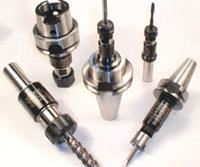

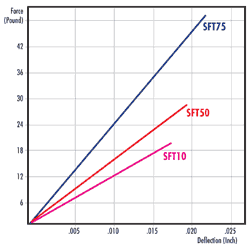
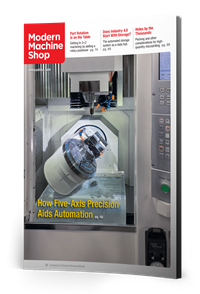

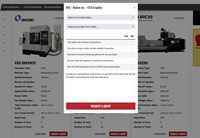


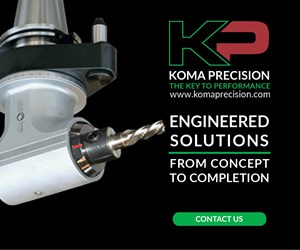







.jpg;maxWidth=300;quality=90)








